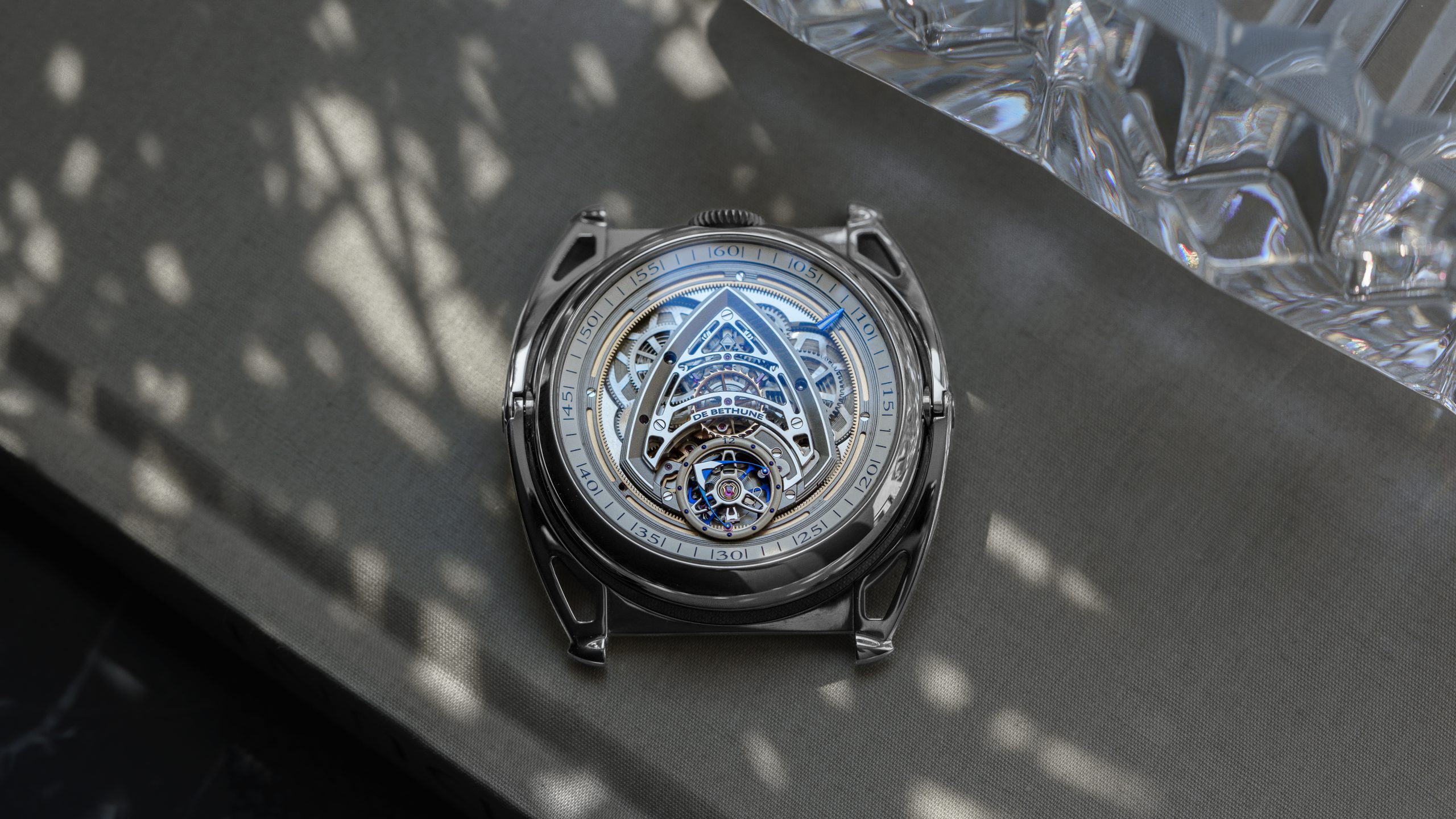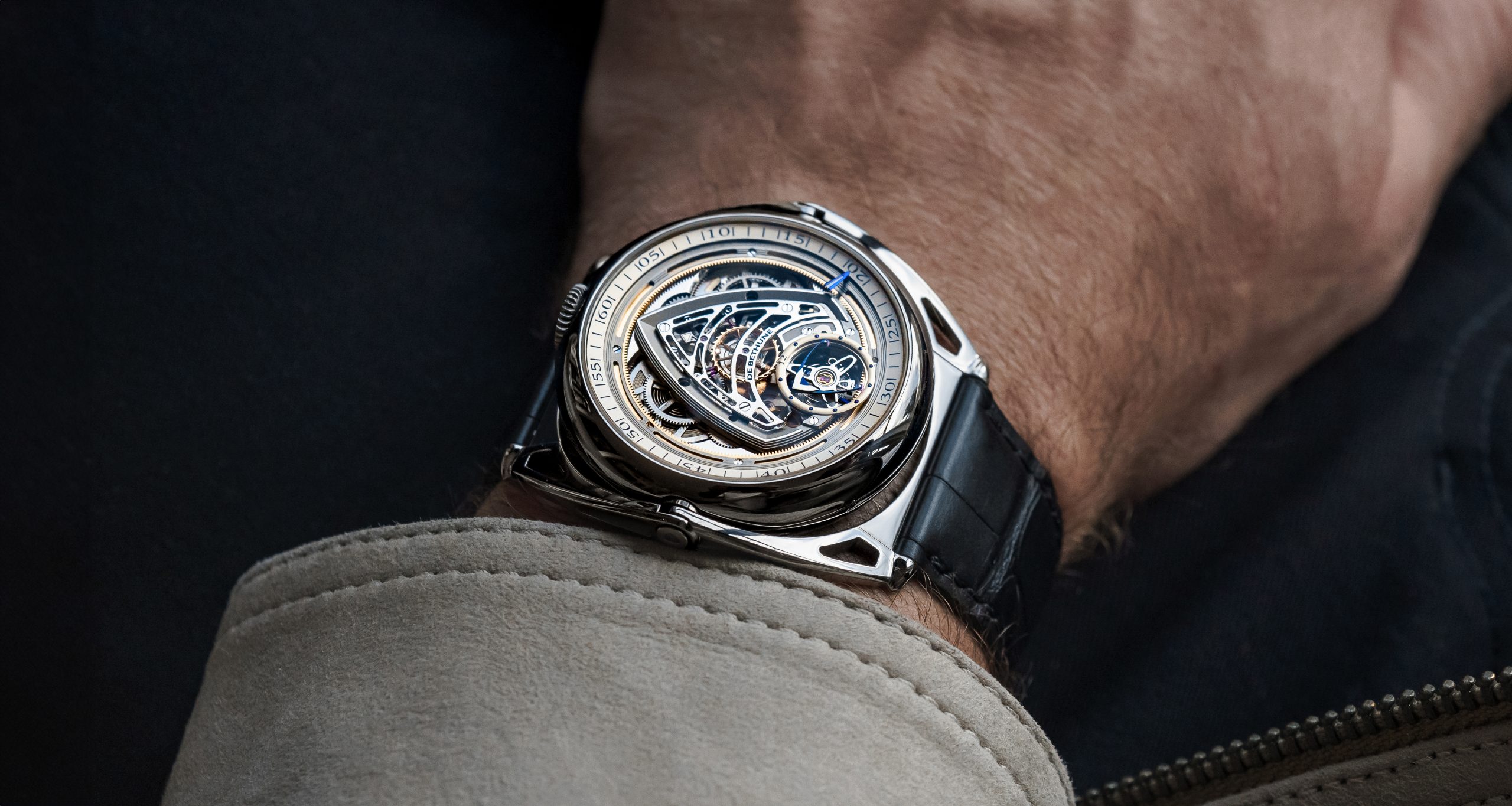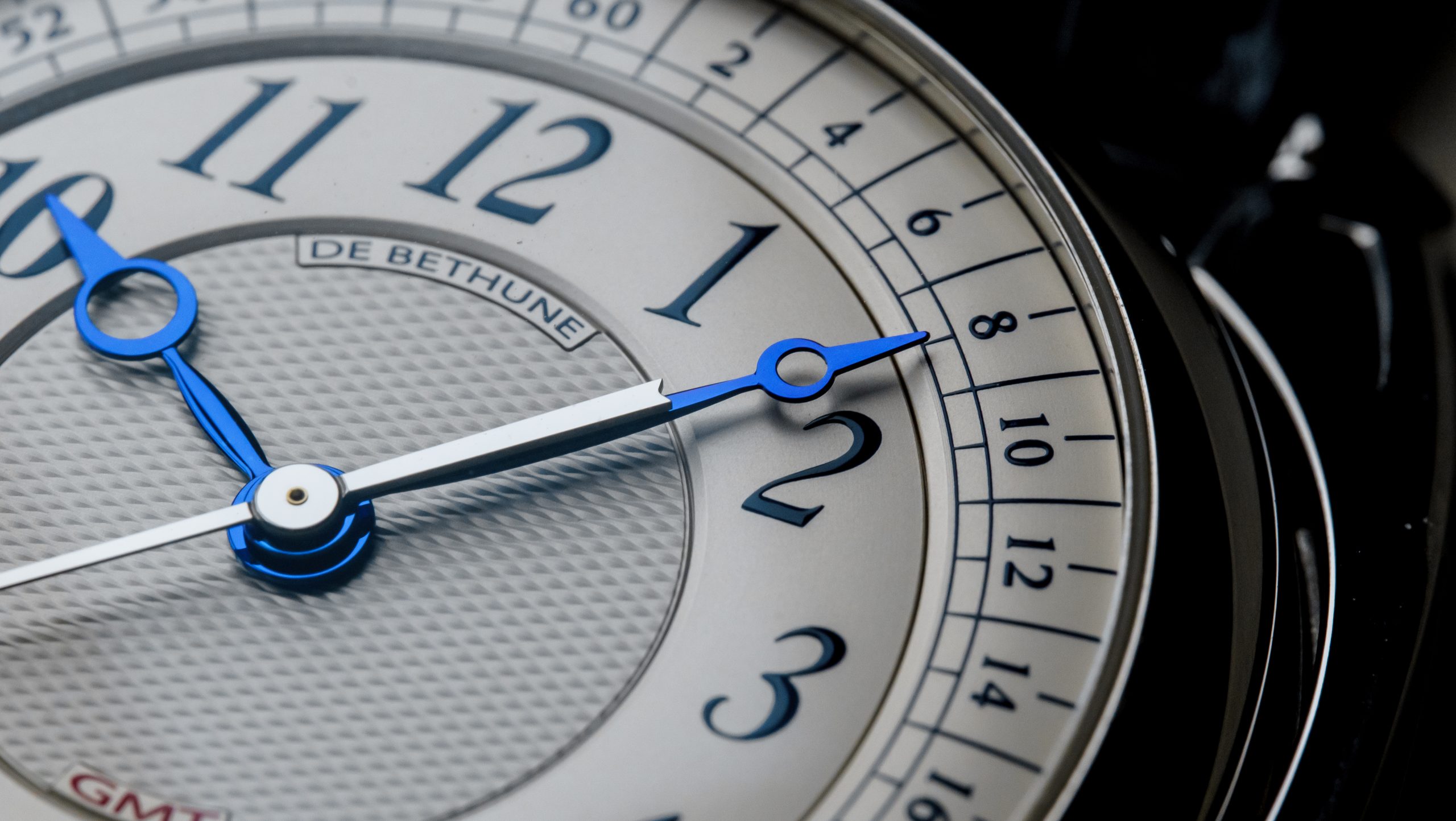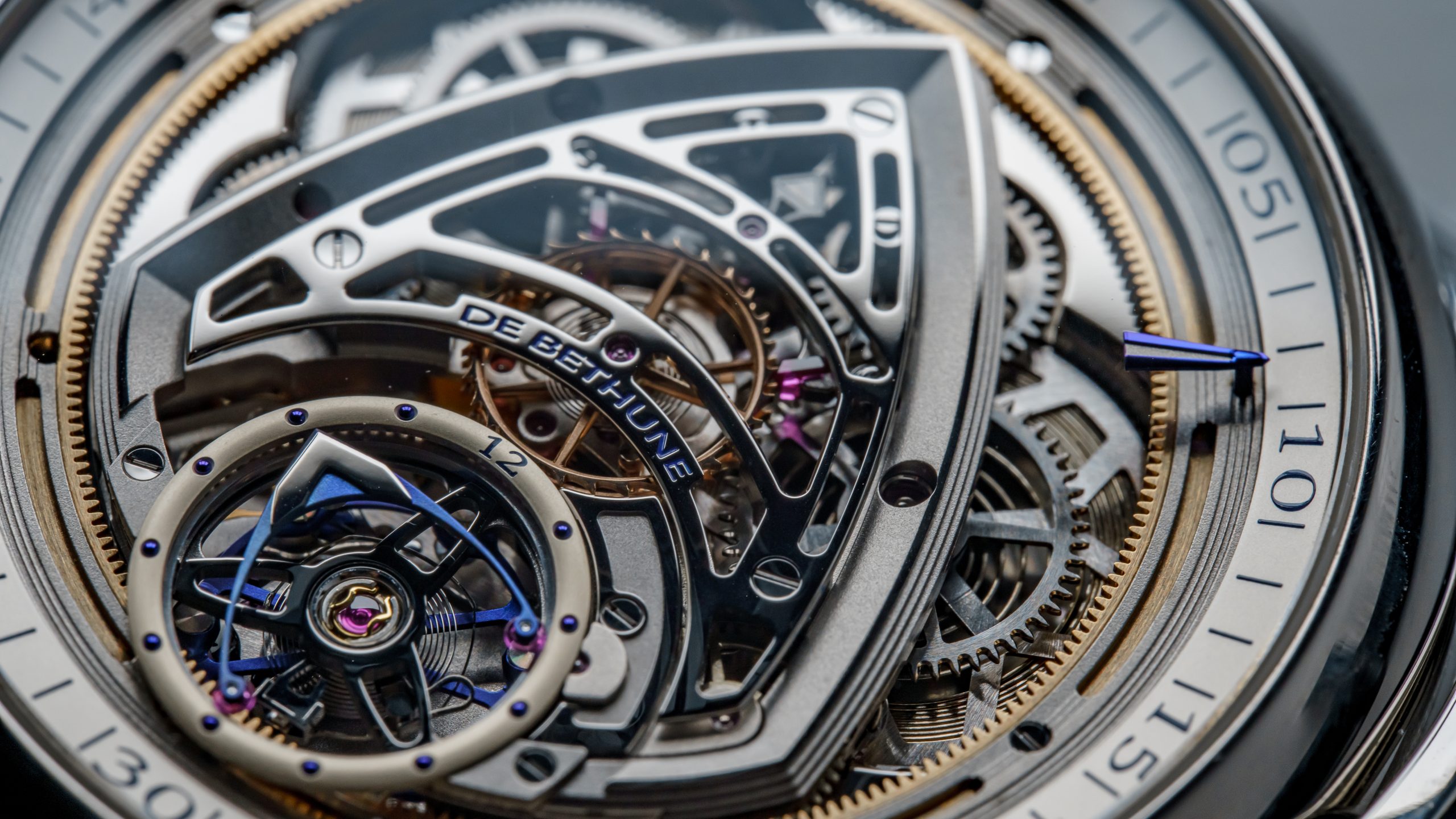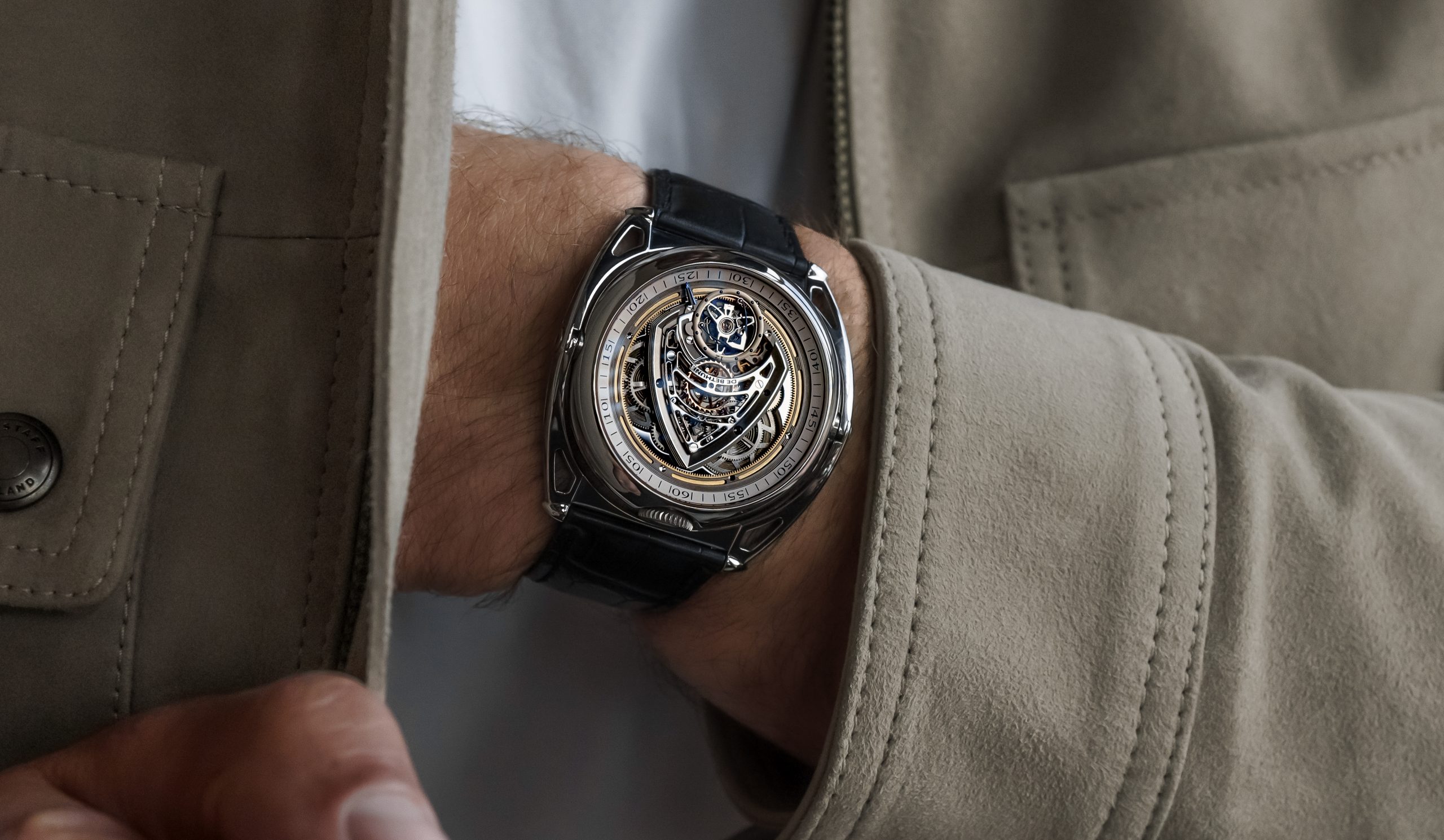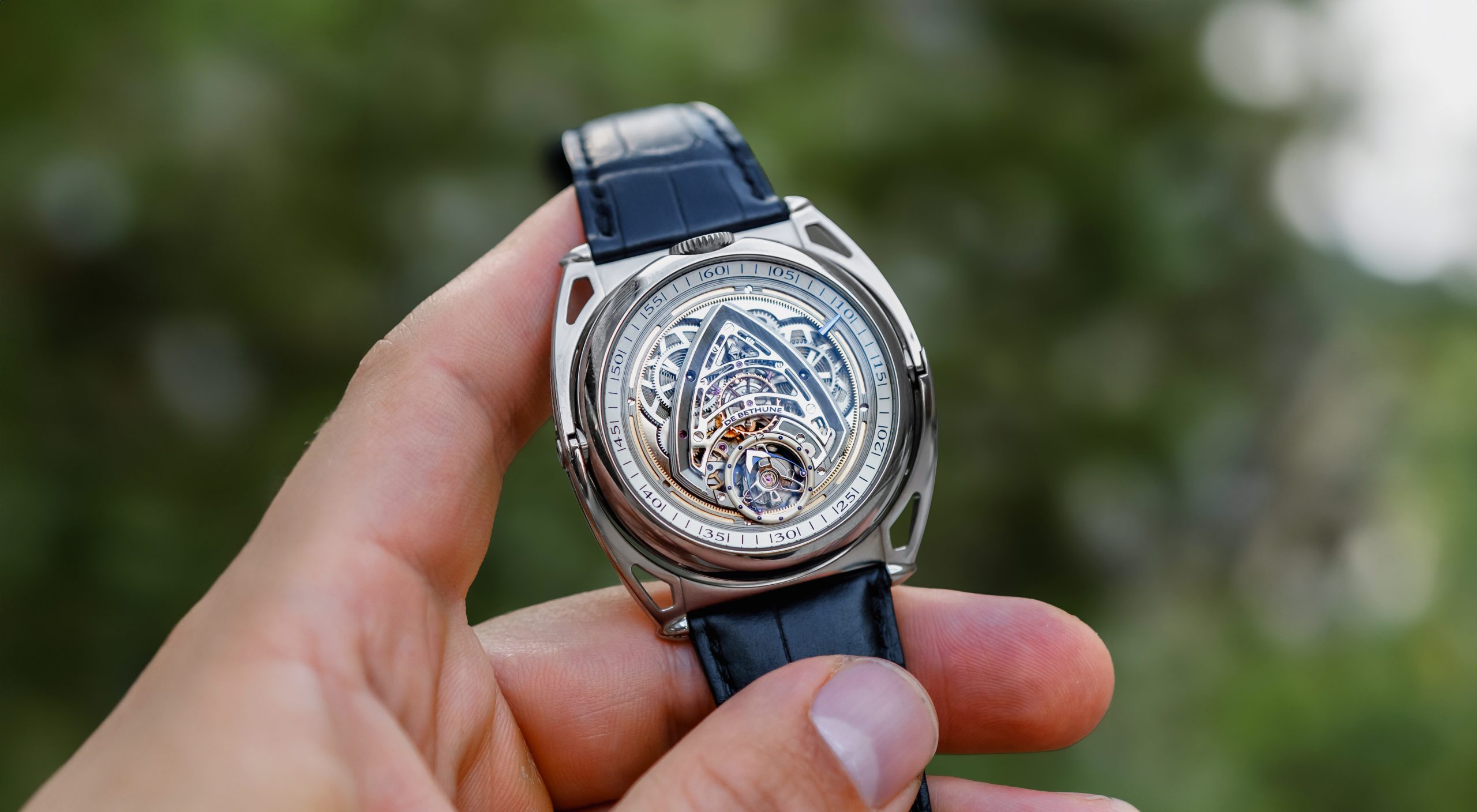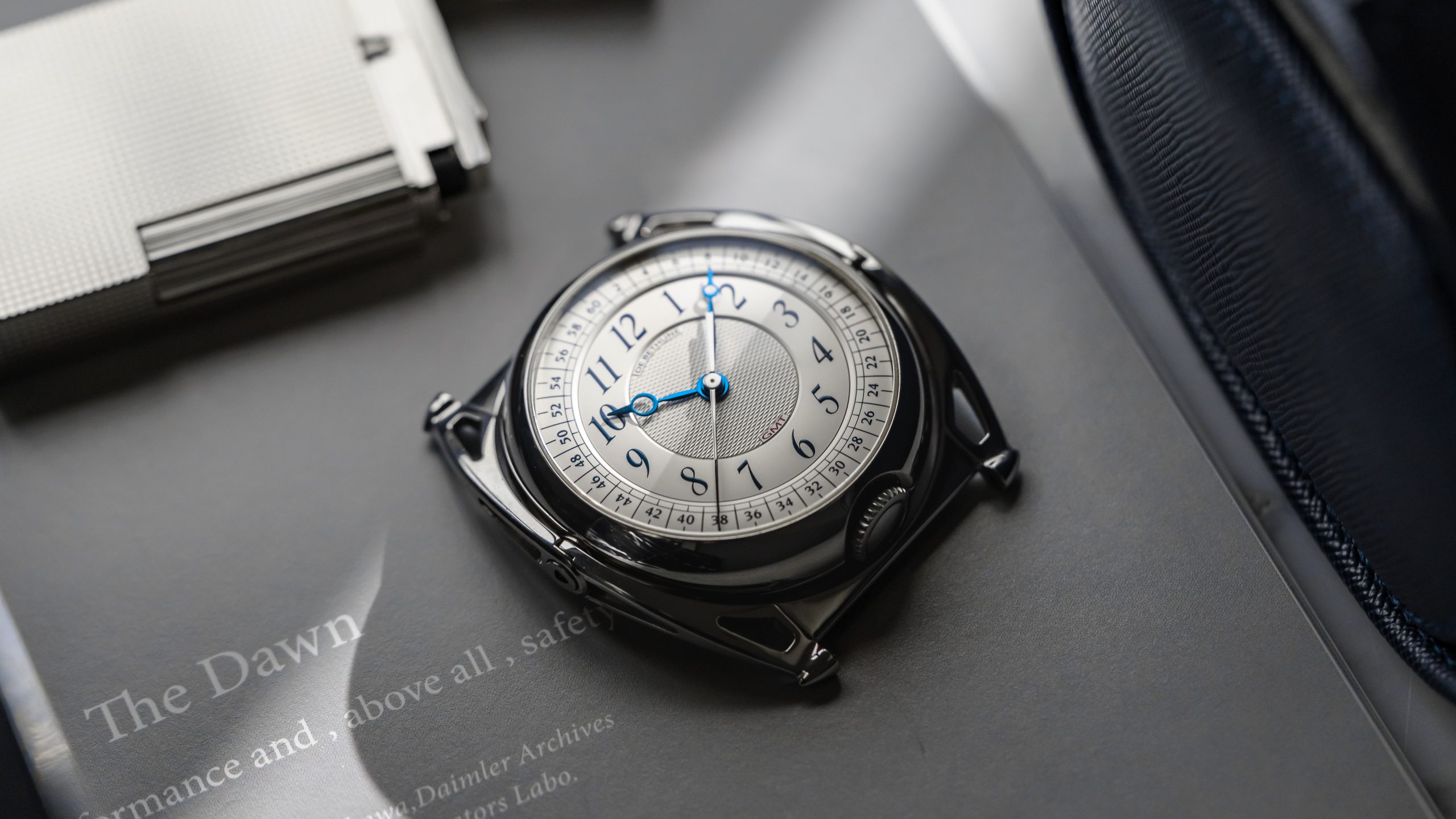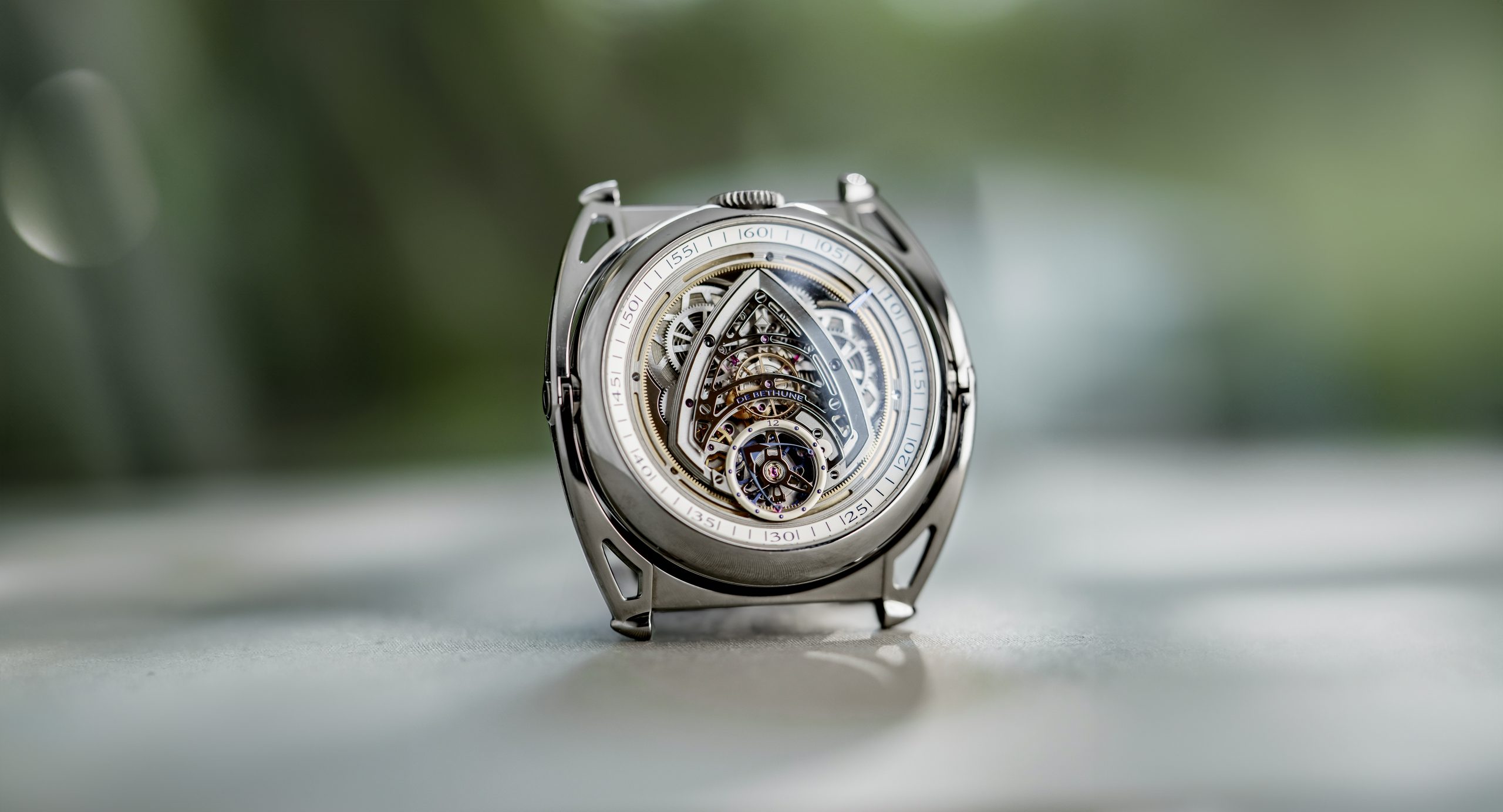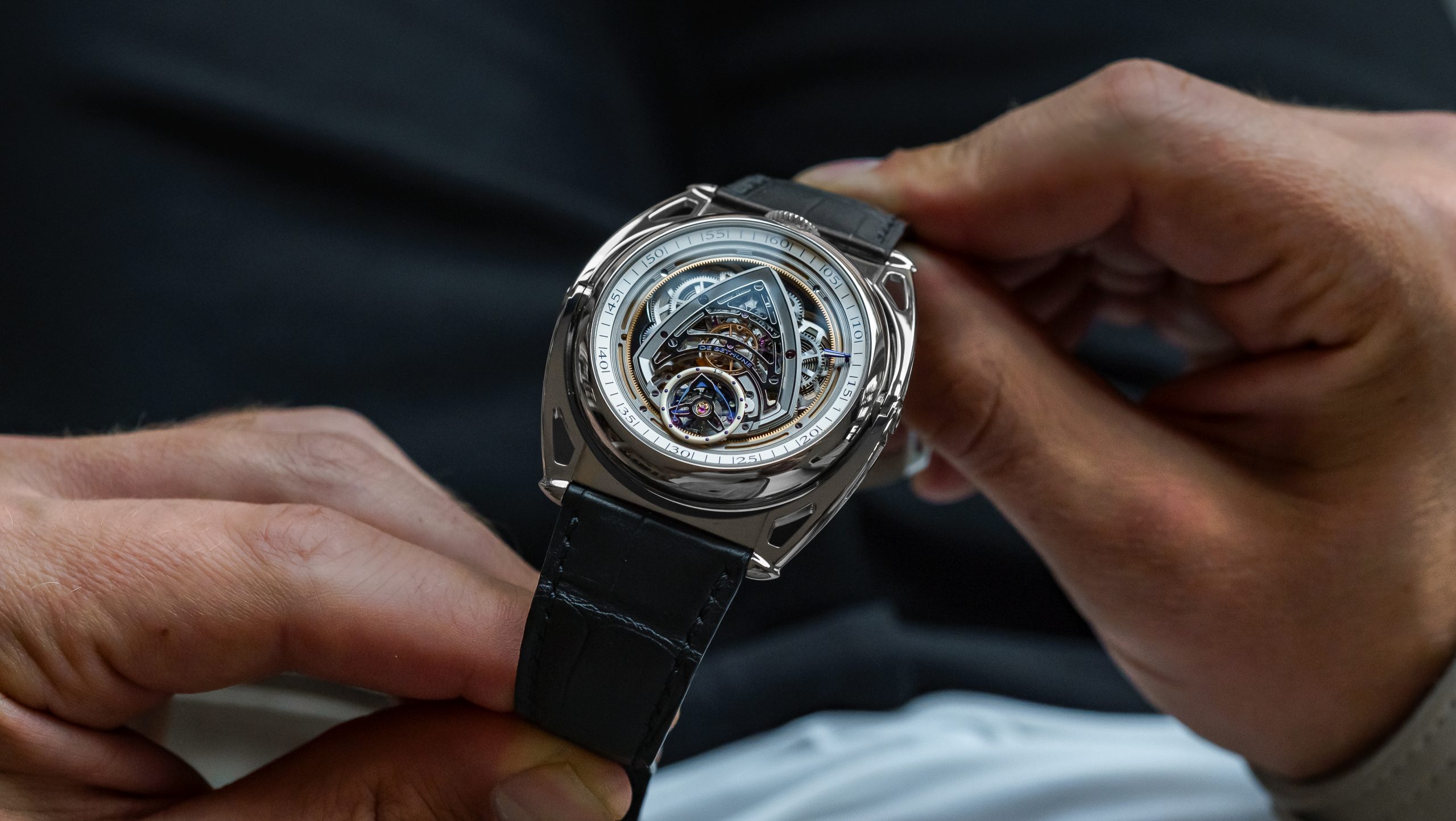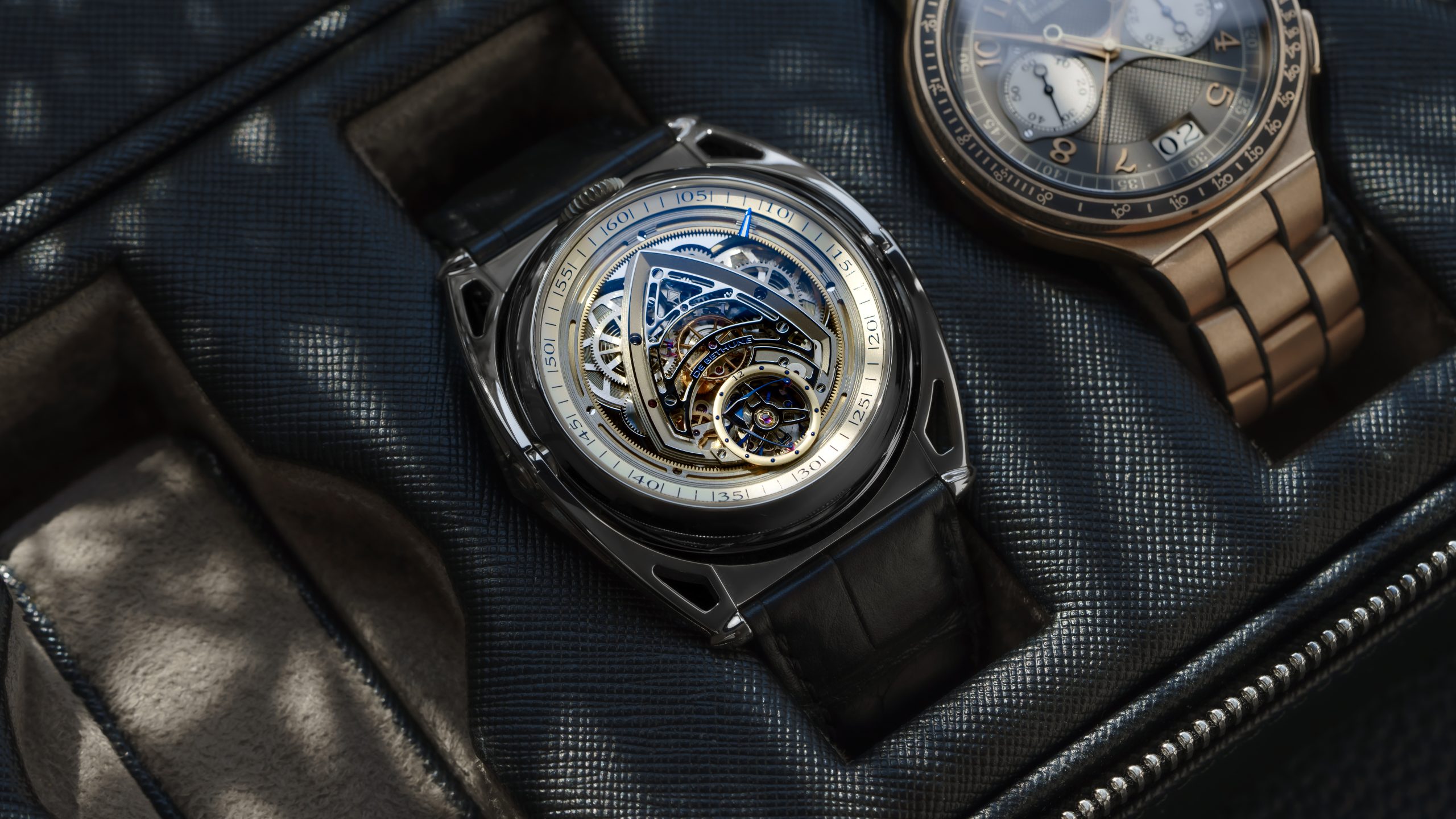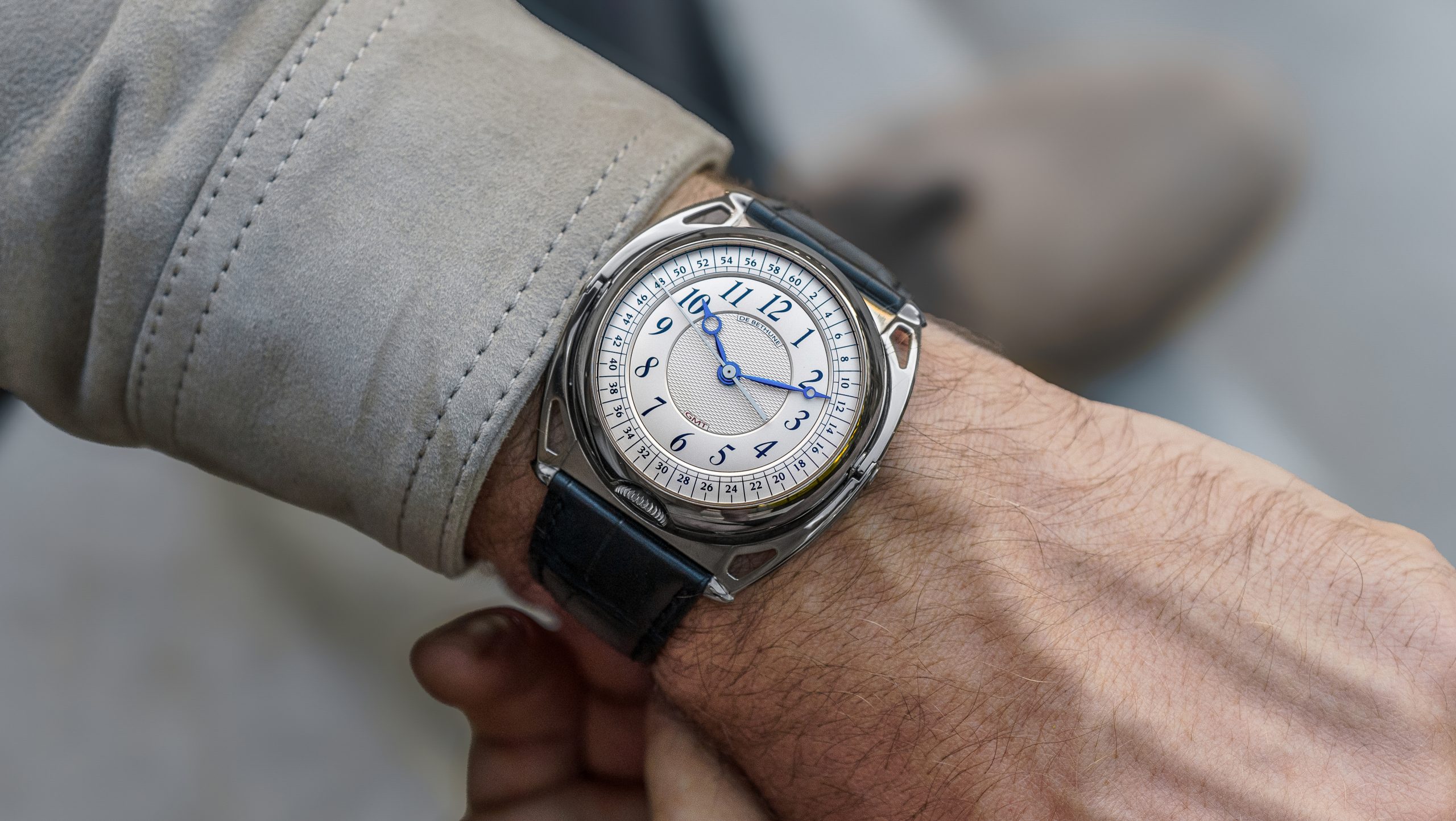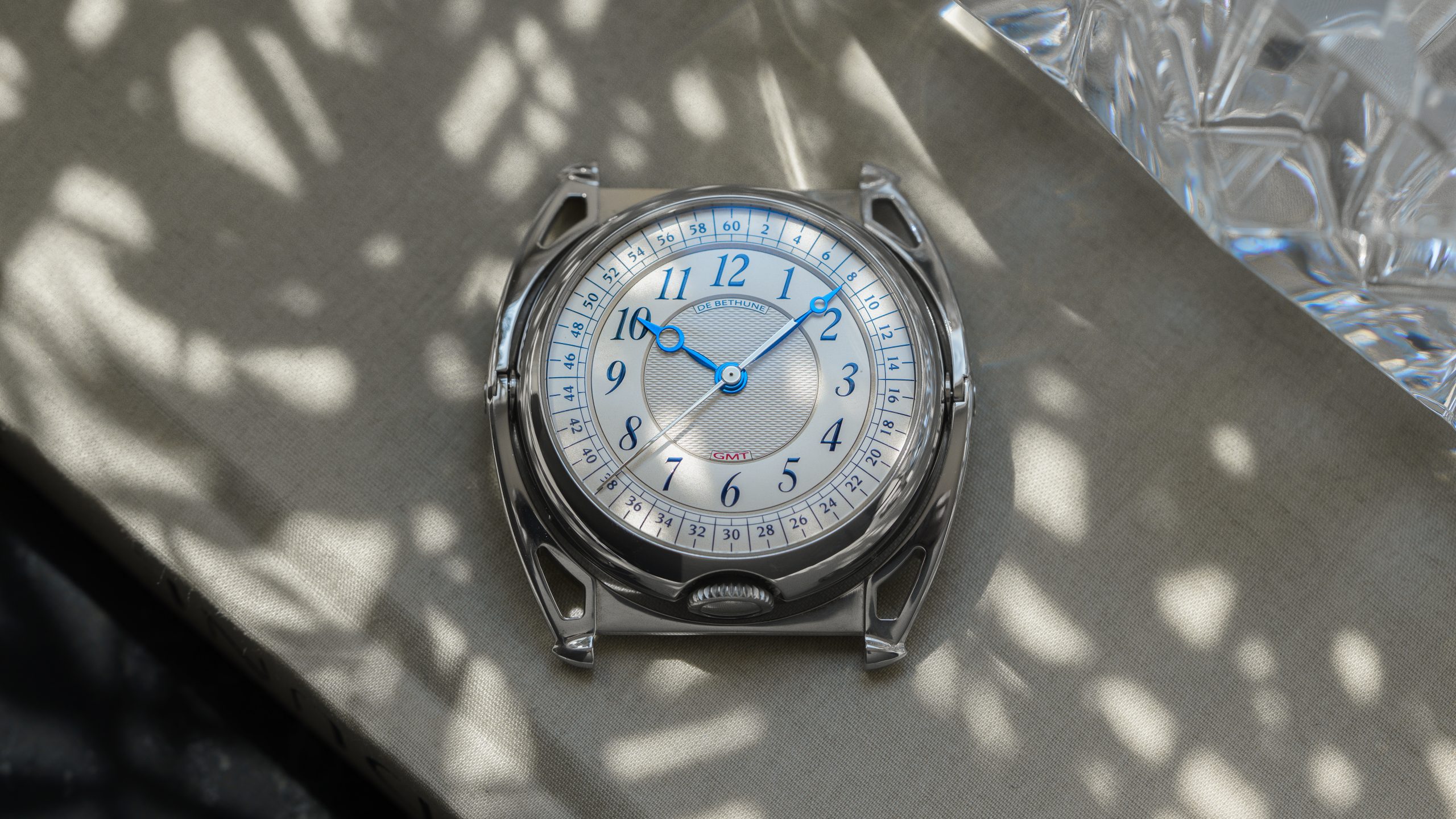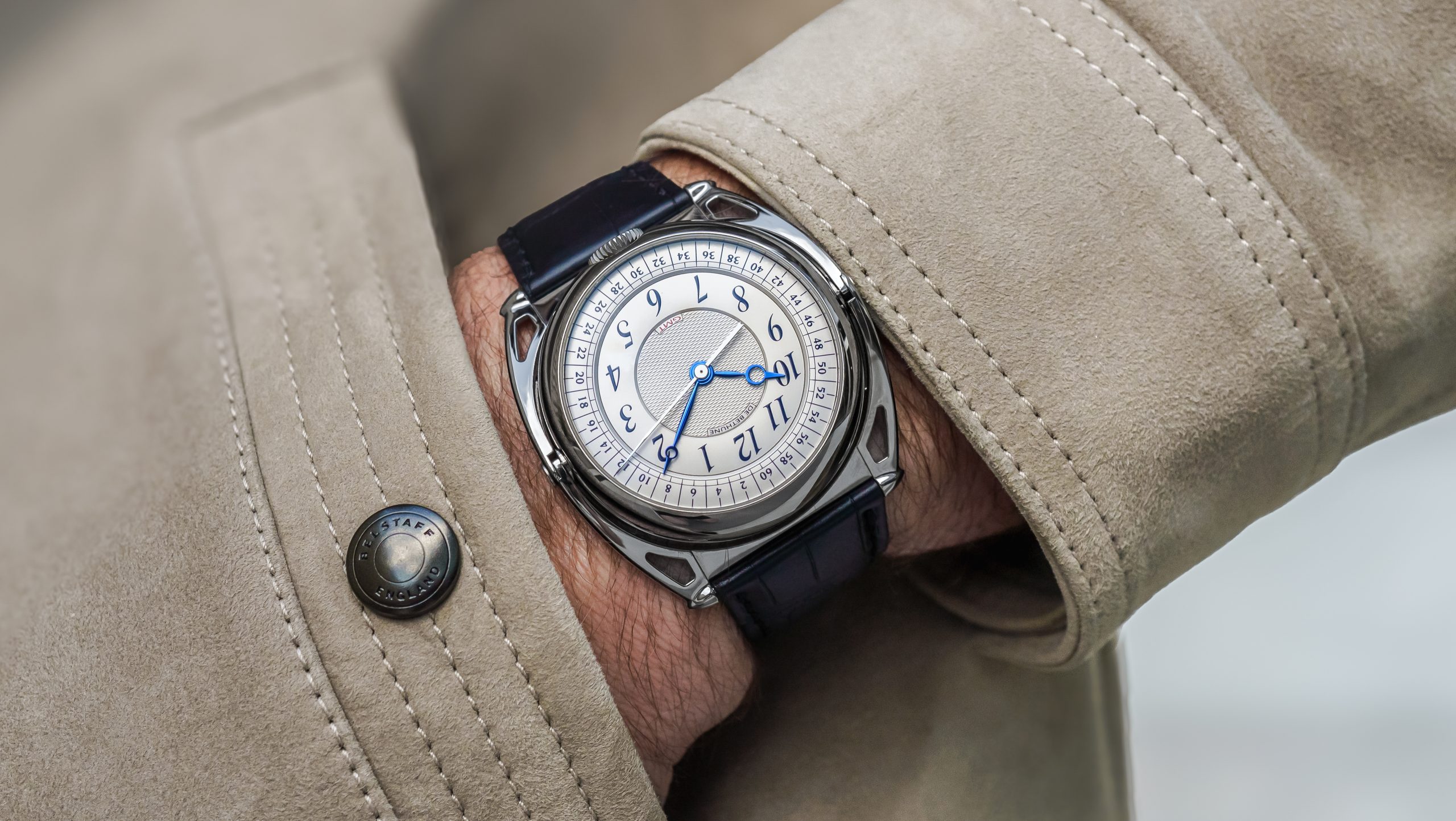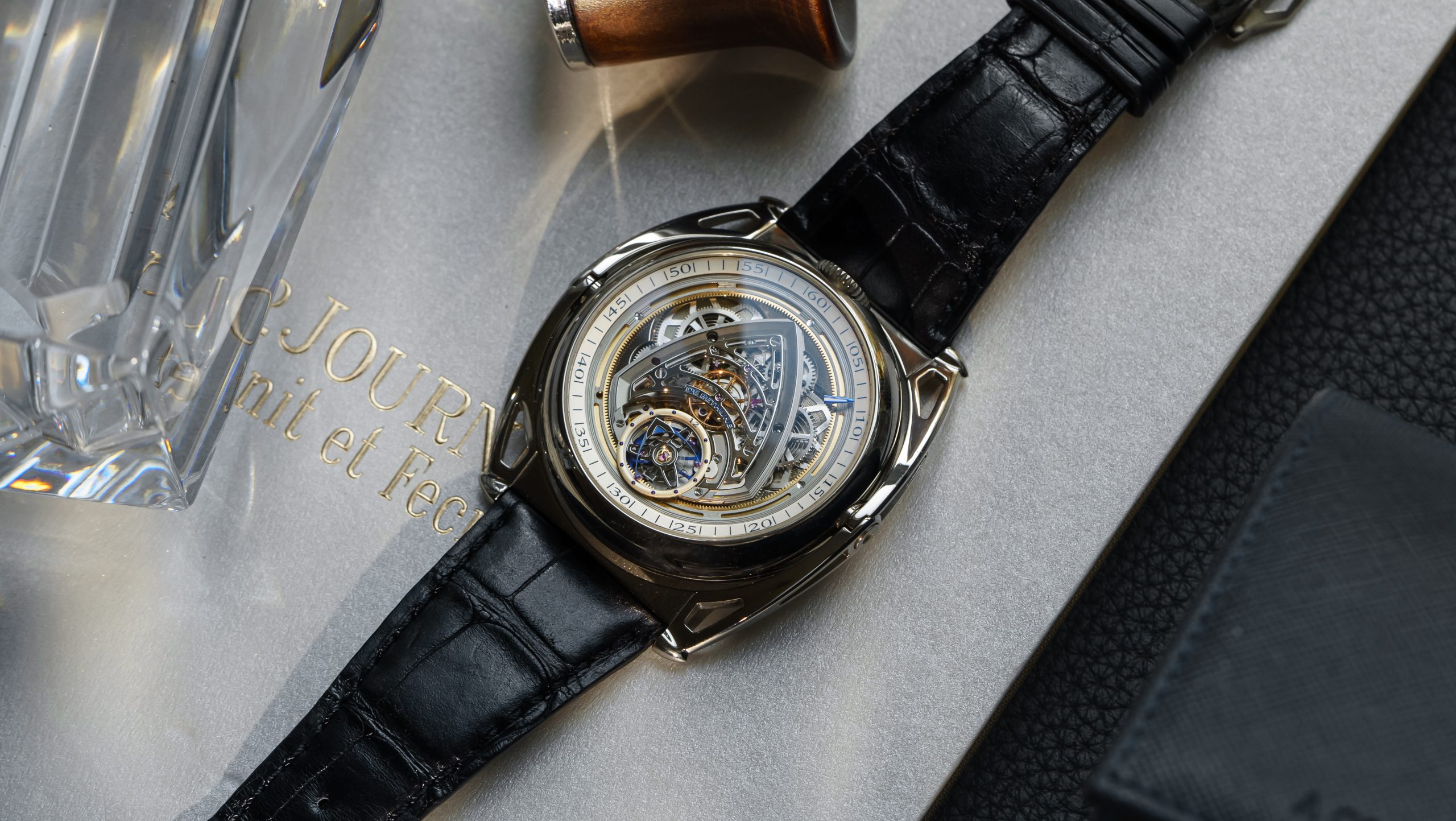Even amongst the wildly innovative and creative projects leaving the doors at De Bethune, this Kind of Two Jumping GMT stands out as experimental and boundary-pushing. This is a watch with two markedly distinct identities, two reversible dials in a rotating case with floating lugs. This is a master work with one calibre powering two dials capable of independent time zones. The first is classical guilloché with Arabic numerals and pomme hands, traditional in the extreme. The second dial is classic De Bethune, skeletonized with obsessive finishing and a deadbeat seconds mechanism front a centre. This is a watch of two characters, both distinct but alike in refinement. The Kind of Two GMT was made in just 20 examples.
The Kind of Two Jumping GMT was De Bethune's way of celebrating their 20th anniversary, but perhaps even more impressively marked the 30th calibre developed ground-up from Denis Flageollet and his team. To synchronize both dials of the DB2517 calibre, Flageollet developed an inverter mechanism that keeps both movements running in their respective correct directions. The case uses the same articulating 'floating' lug system of the DB28, but with a new pivot to allow full rotating of the case with resistance points for each dial. Every single component here was made at De Bethune.
On the contemporary side, the hours are read from a deltoid-shaped pointer hand above the balance, while minutes are read on a peripheral minute hand so as to not obscure the view. Most of this dial is given to a large deltoid barrel bridge, with a huge degree of black polish adorning its individual steps. Looking closely at the ratchet wheel you'll find micro-bevelling between the gear teeth, performed by hand. Dual self-adjusting mainspring barrels take up the upper third, for four days of power reserve. Two escapements are on display, the main 36000 vph balance wheel at 6 and a 7200 vph escapement after it, in the center of the dial. The deadbeat seconds features two 14k gold wheels with a locking lever, hand polished and internally bevelled. The white gold and blued steel main balance wheel contains a patented hairspring with flat terminal curve for concentricity in any position. De Bethune holds more patents in balance wheel designs than many independent brands hold in total.
Meanwhile, the classic wave guilloché dial displays a perfectly precise deadbeat seconds with a Jumping GMT, capable of a separate time zone to the reversible contemporary dial. The second crown position allows the user to jump it forwards or backwards. To emphasize the chronometry that this dial is optimized for, one will also find a stop-seconds upon pulling out the crown. The classic side's design is very alike original DB8, the first De Bethune with their proprietary Arabic numerals from 2003, but with a carefully calibrated and designed seconds track to optimize legibility at all points of travel.
The Kind of Two GMT is the easily the most mechanically audacious and experimental GMT from any independent watchmaker, with the possible exception of Greubel Forsey's GMT Sport. This symphony in independent watchmaking requires 394 components for just the calibre, with 28 components for the rotating case. It challenges aesthetic conventions through new ideas of what a GMT should be, split personalities with a shared heart born from the creativity of Denis Flageollet. There is nothing else remotely alike to the Kind of Two GMT, a split-personality instrument of travel, mechanical ambition, and space-age art.
